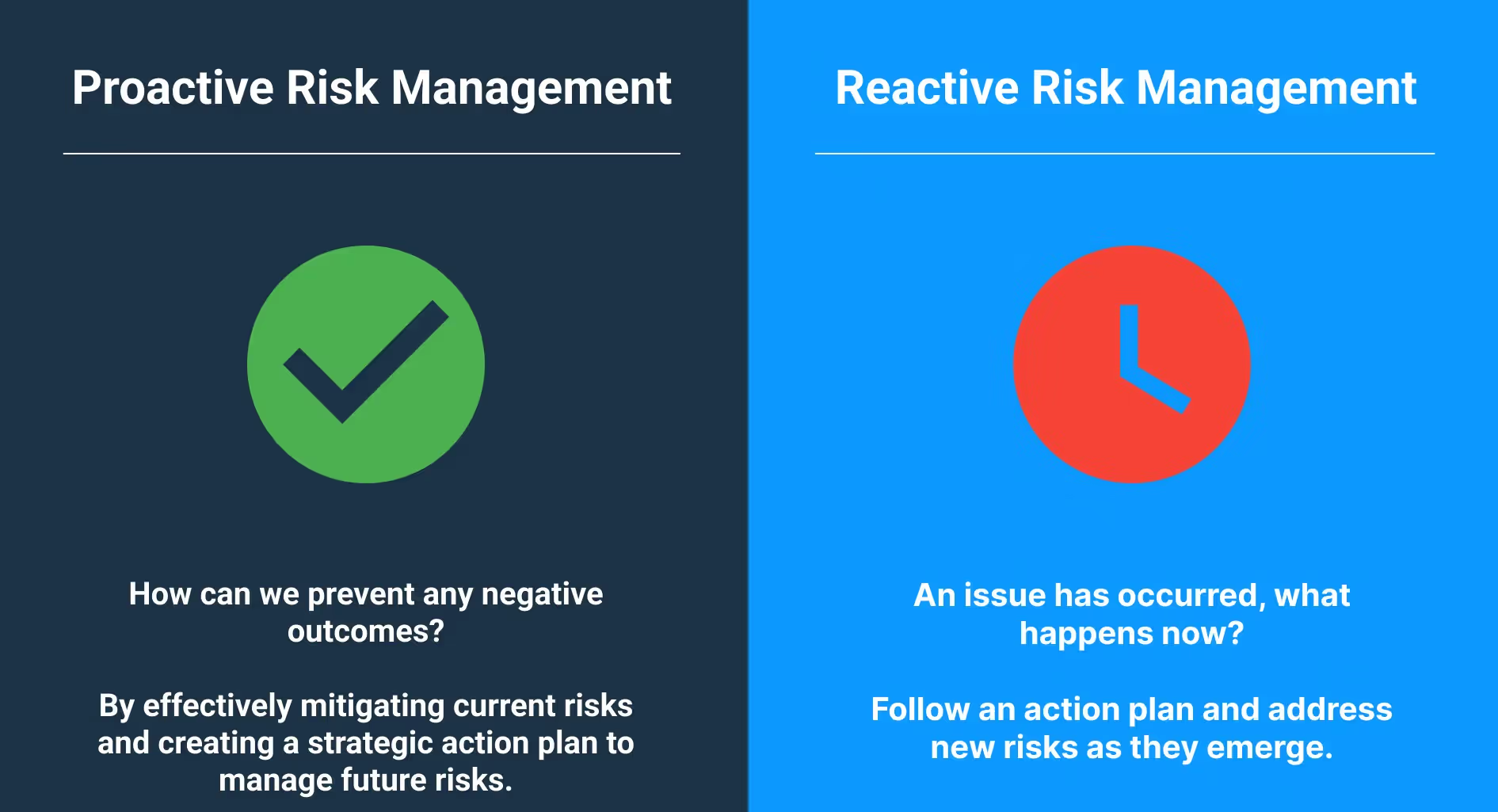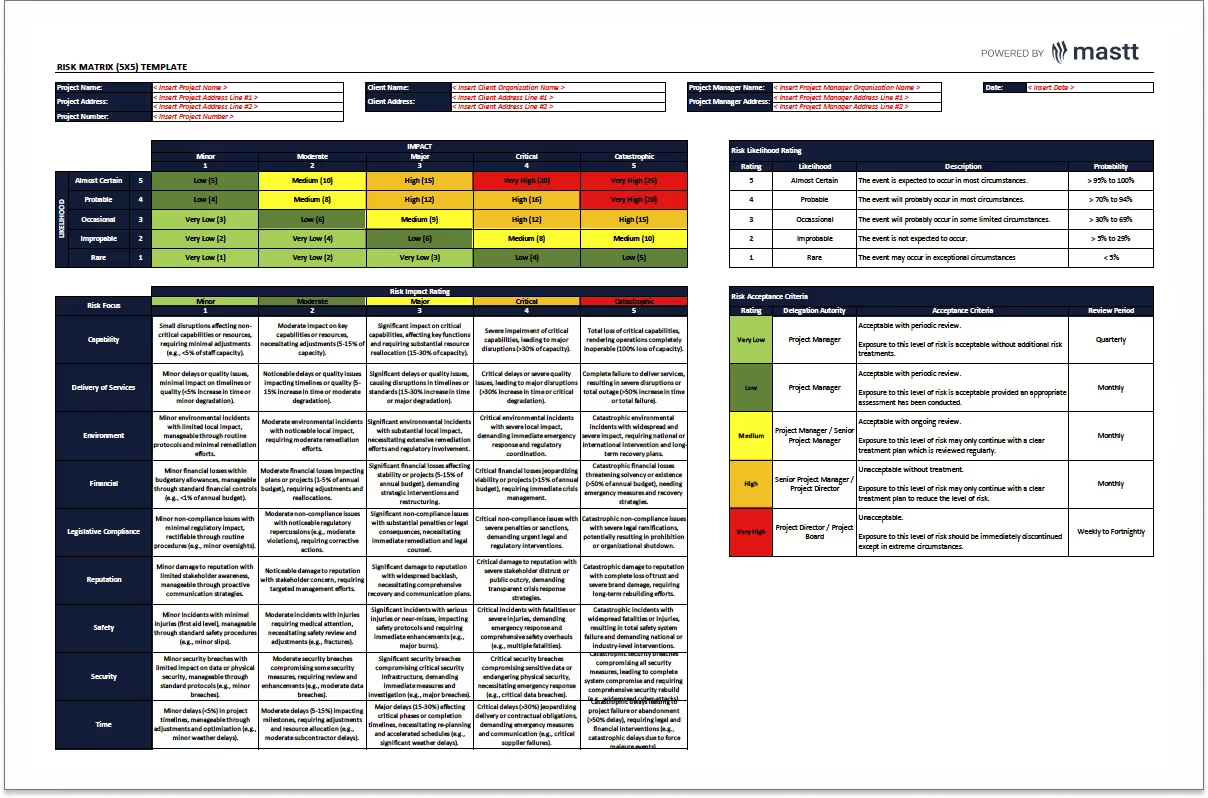In construction, effective risk management plays a critical role in ensuring project success. There are two main approaches: proactive vs reactive. Understanding the differences between these strategies, and how to combine them effectively, can significantly influence your project’s outcome.
Proactive vs Reactive Risk Management: Which is Better for Construction?
When managing construction risk, project managers must decide whether to take a proactive stance—anticipating risks before they arise—or to react to issues once they occur. Both approaches have their place, but finding the right balance is essential to keep projects on schedule, within budget, and compliant with quality standards.
Key Differences Between Proactive and Reactive Risk Management

Proactive Risk Management: Anticipating and Mitigating Risks
Proactive risk management involves identifying potential risks before they occur and taking steps to prevent or mitigate them. This forward-thinking approach allows project teams to assess risks early and develop strategies to prevent them from negatively impacting the project.
Key aspects of proactive risk management include:
- Regular Risk Assessments: Continuously evaluating potential risks throughout the project lifecycle.
- Risk Register Maintenance: Keeping an updated record of identified risks and their mitigation strategies.
- Integration into Project Phases: Embedding risk management practices into every phase of the project.
- Predictive Tools: Utilizing advanced tools like Monte Carlo simulations, risk heat maps, AI-based forecasts, and scenario planning to assess risks and develop mitigation plans.
By using proactive measures, teams can prevent crises, improve decision-making, and allocate resources more effectively, resulting in smoother project execution.

Reactive Risk Management: Responding to Issues After They Arise
Reactive risk management involves addressing risks after they materialize. This approach focuses on contingency plans and crisis management strategies to tackle unexpected events as they occur.
Key aspects of reactive risk management include:
- Contingency Planning: Predefined responses for unexpected issues.
- Crisis Management: Immediate actions to address risks as they arise.
While reactive strategies are necessary for unforeseen risks, relying solely on them can lead to increased costs, delays, and compromised quality.

Proactive vs Reactive Risk Management: Pros and Cons
Proactive Risk Management: Advantages
- Risk Prevention: Identifying risks early allows you to prevent them, saving time, money, and effort.
- Optimized Resource Allocation: Anticipating potential issues enables better planning and resource allocation.
- Improved Decision-Making: More time to assess risks leads to more thoughtful and effective decision-making.
- Increased Stakeholder Confidence: Proactive management builds trust with stakeholders by showing you are in control of risks.
- Reduced Downtime: By preventing risks, you minimize delays and keep projects on schedule.
Proactive Risk Management: Disadvantages
- Resource-Intensive: Proactive risk management can require significant time, money, and effort.
- Potential Over-Preparation: Resources spent on mitigating risks that don’t materialize could be used elsewhere.
- Added Complexity: Proactive strategies can add complexity, especially when balancing them with other project priorities.
Reactive Risk Management: Advantages
- Resource Efficiency: You only respond to risks that actually occur, avoiding unnecessary preparation for unlikely scenarios.
- Immediate Focus: Teams can concentrate on solving current, real problems rather than potential ones.
- Flexibility: Solutions and resources are applied only when needed, reducing upfront costs.
Reactive Risk Management: Disadvantages
- Higher Costs: Addressing risks after they occur often results in higher costs to fix issues.
- Project Delays: Reactive strategies can lead to delays as teams scramble to address unforeseen risks.
- Quality Compromise: Rushed solutions can impact the overall quality of the project.
- Reduced Stakeholder Confidence: Delayed responses to risks can erode trust in the project’s success.
Balancing Proactive and Reactive Risk Strategies
Finding the right balance between proactive and reactive strategies ensures a comprehensive approach to construction risk management. Proactive measures help prevent many risks, while reactive strategies allow teams to address unexpected surprises quickly and efficiently.
Strategies for balancing approaches:
- Conduct regular risk reviews to identify emerging risks and update mitigation plans.
- Use risk dashboards to monitor project health and anticipate potential issues.
- Develop a robust contingency plan to manage unforeseen risks, ensuring reactive measures don’t derail the project.

Proactive vs Reactive Risk Management: Which is Best?
Ultimately, the choice between proactive vs reactive risk management depends on the specific risks your project faces. Large and complex construction projects benefit from a proactive approach, where risks are mitigated before they escalate. Smaller or less complex projects may lean more on reactive management, addressing risks only when necessary to avoid unnecessary costs.
Download our free Risk Management Plan Template to effectively document and implement both proactive and reactive risk management processes for your project.
When to Use Proactive Risk Management:
- For large-scale projects with tight deadlines or budgets.
- When the cost of prevention is lower than the potential impact of the risk.
- If the project involves new or untested methods and materials.
When to Use Reactive Risk Management:
- On smaller projects where risks are less severe or more predictable.
- When budget constraints limit the ability to invest in proactive strategies.
- If the risks involved are hard to predict or unlikely to occur.
Conclusion: A Holistic Risk Management Strategy
Balancing proactive vs reactive risk management is essential for the success of any construction project. While proactive strategies help prevent risks, reactive measures enable teams to address the unexpected. Together, these approaches create a comprehensive risk management strategy that keeps construction projects on time, within budget, and safe.
By fostering a risk-aware culture, investing in predictive tools, and maintaining open communication, your team can stay ahead of risks and ensure project success. For further insights, check out this external resource on risk management strategies.













.avif)


